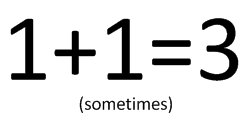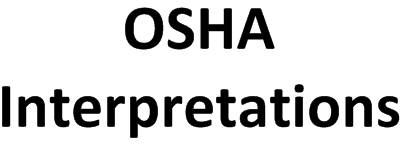MAK Collection for Occupational Health and Safety Now Available Online – FREE
The MAK Collection for Occupational Health and Safety now is available on-line and free. It provides the German recommended exposure limits with documentation for chemicals used in Germany and many other countries. The MAK-values are daily 8-hour time-weighed average values and apply to healthy adults. Substance-specific acceptable peak concentrations, including the highest possible duration of such peaks, are defined. If the substance can be taken up through the skin, this is indicated. The MAKs have been collected and evaluated by the Commission for the Investigation of Health Hazards of Chemical Compounds in the Work Area – part of the DFG, the German Research Foundation. The MAK values are similar to the ACGIH TLVs and documentation.
You can find the publication HERE
Source: Wiley Online Library


 Below is a summary of some of the very similar methods and rationale used by agencies to assess the combined toxic effects of chemicals.
Below is a summary of some of the very similar methods and rationale used by agencies to assess the combined toxic effects of chemicals.

 The purpose of this memorandum is to resolve issues concerning adjustments of the PEL during extended work shifts. This applies for exposures to the noise levels of Table G-16 of 29 CFR 1910.95 or substances found in Subpart Z. Current OSHA policy requires only the action level to be reduced for exposures to noise during extended work shifts; the PEL is not required to be adjusted. The only standards which require PEL adjustments are the lead standards in construction and general industry. These standards have a specific provision which requires work shift adjustments. Existing policy for Occupational Exposure to Cotton Dust also has a requirement to adjust extended work shifts when employees are required to wear respirators for a portion of the work shift to reduce their level of exposure, as set forth in the Federal Register, Vol. 45, No. 251, pp. 85736-85739. The contribution that the extended work hours adds to employee exposure must be included in calculating the required time respirators must be worn during the shift.
The purpose of this memorandum is to resolve issues concerning adjustments of the PEL during extended work shifts. This applies for exposures to the noise levels of Table G-16 of 29 CFR 1910.95 or substances found in Subpart Z. Current OSHA policy requires only the action level to be reduced for exposures to noise during extended work shifts; the PEL is not required to be adjusted. The only standards which require PEL adjustments are the lead standards in construction and general industry. These standards have a specific provision which requires work shift adjustments. Existing policy for Occupational Exposure to Cotton Dust also has a requirement to adjust extended work shifts when employees are required to wear respirators for a portion of the work shift to reduce their level of exposure, as set forth in the Federal Register, Vol. 45, No. 251, pp. 85736-85739. The contribution that the extended work hours adds to employee exposure must be included in calculating the required time respirators must be worn during the shift.